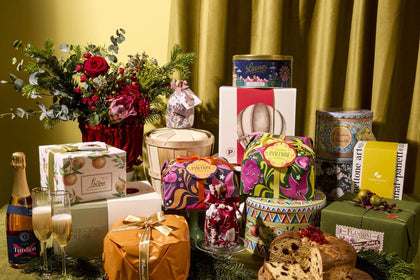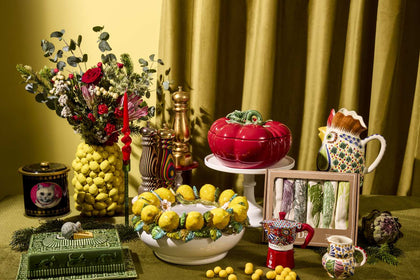How To Use A Chopping Board

Keeping your chopping boards in top condition is essential for both hygiene and the longevity of the boards.
In this guide, we’ll cover everything you need to know about maintaining and cleaning your chopping boards. Whether they are wooden, plastic, or bamboo, each type of board requires specific care to keep them safe and functional.
We’ll provide detailed instructions on cleaning, oiling, and sanitising your boards, as well as tips for proper storage and handling.
By following these guidelines, you can ensure your chopping boards remain in excellent shape, ready for all your food preparation needs. Let's dive into the steps to keep your chopping boards clean and well-maintained.
Shop chopping boards here or read our guide on how to properly clean your chopping boards
The Best Chopping Board for Cooked Meat
Choosing the right chopping board for cooked meat is essential for maintaining food safety and hygiene.
For cooked meat, a wooden or bamboo chopping board is often recommended. These materials are gentle on knife edges, preventing unnecessary dulling. Certain woods can also have natural antimicrobial properties, which help reduce the risk of bacterial growth. Plus, they are durable and can withstand regular use without significant wear.
It's important to clean these boards thoroughly after each use to prevent any residue from contaminating other foods. Regular oiling of wooden boards will help maintain their condition and extend their lifespan.
Using separate boards for raw and cooked meat is crucial to avoid cross-contamination. A well-maintained wooden or bamboo board will provide a reliable surface for slicing and serving your cooked meats, keeping your kitchen safe and efficient.
The Best Chopping Board for Raw Meat
When handling raw meat, it's vital to use a chopping board that prioritises hygiene. Plastic chopping boards are ideal due to their non-porous surface, which prevents the absorption of liquids and bacteria.
They are also dishwasher safe, allowing for thorough cleaning and sanitization after each use.
It's advisable to have multiple plastic boards to rotate between uses, ensuring that you always have a clean surface ready. Keeping a dedicated plastic board for raw meat helps maintain a hygienic kitchen environment and reduces the risk of foodborne illnesses. Using different coloured plastic boards can help avoid cross-contamination with other foods.
Plus, plastic boards are lightweight and easy to store, making them practical for everyday use.

The Best Chopping Board for Fruit and Vegetables
For chopping vegetables, a wooden or bamboo board is an excellent choice. These materials are gentle on knives, preserving their sharpness over time. Wooden and bamboo boards also offer a sturdy surface, which makes chopping and slicing vegetables easier and safer.
Certain woods have natural antimicrobial properties add an extra layer of hygiene. These boards are durable and can handle the rigours of daily use without showing significant wear.
Regular cleaning and occasional oiling will keep your wooden or bamboo board in top condition. Using a dedicated board for vegetables helps prevent flavour transfer and contamination from other foods.

The Best Chopping Board for Bread
For slicing bread, a wooden chopping board is the ideal choice. Wooden boards provide a sturdy surface that is gentle on bread knives, helping to maintain their sharpness.
These boards are durable and can handle the repeated sawing motion required to slice through crusty loaves without significant wear. Wooden boards also tend to absorb less moisture than other materials, which helps in keeping the bread fresh and preventing it from getting soggy.
Additionally, the natural antimicrobial properties of some woods can make it a hygienic option. Regular oiling will keep your wooden board in top condition, ensuring it remains a reliable tool in your kitchen.
A dedicated wooden board for bread not only makes slicing easier but also adds a touch of rustic charm to your kitchen setup.
What Chopping Boards Do Chefs Use?
Professional chefs often use a variety of chopping boards depending on the task at hand. The choice of board can vary, but the key is to use the right board for each specific task to maintain hygiene and efficiency in the kitchen.
Some chefs also use composite boards, which combine the benefits of both wood and plastic, offering durability and ease of cleaning.
Which Side of the Chopping Board Goes Down?
When using a chopping board, it's important to place the correct side down for stability and safety. Many chopping boards have one side with rubber or silicone grips to prevent slipping; this side should always be placed down.
If the board has a flat and a grooved side, the flat side should generally be used for cutting, while the grooved side can catch juices from meats or fruits. Some boards are reversible, allowing you to use either side, but it's a good practice to dedicate one side to raw meats and the other to vegetables or cooked foods to avoid cross-contamination.
Placing the correct side down helps ensure a stable cutting surface, reducing the risk of accidents in the kitchen.
Why Do You Put a Towel Under a Chopping Board?
Placing a towel under a chopping board is a simple yet effective way to enhance kitchen safety. The primary reason is to prevent the chopping board from slipping during use. A damp towel creates friction between the countertop and the board, providing a stable surface for chopping.
This stability helps avoid accidents, such as the board shifting unexpectedly while cutting. It also allows for more precise cuts, as the board remains stationary. Additionally, using a towel can absorb any juices or liquids that might spill over, keeping your workspace cleaner.
This practice is particularly useful when working with larger items that require more force to cut. By ensuring your chopping board stays in place, you can work more efficiently and safely, making meal preparation smoother and more enjoyable.
What Not to Do with a Wood Chopping Board
Caring for a wood chopping board involves avoiding certain practices to extend its lifespan. First, never submerge a wood chopping board in water or put it in the dishwasher.
Excess moisture can cause the wood to warp and crack. Avoid using harsh chemicals or bleach to clean the board, as they can damage the wood and leave harmful residues. Instead, wash the board with mild soap and water, and dry it immediately.
Do not leave the board in direct sunlight or near heat sources, as extreme temperatures can cause it to dry out and split. Regularly oiling the board with food-safe mineral oil helps maintain its condition and prevents drying.
By following these guidelines, you can keep your wood chopping board in excellent shape for years.
How to Use a Chopping Board First Time
- Wash with warm, soapy water and dry thoroughly.
- Place a damp towel underneath to prevent slipping.
- Position the board on a stable, flat surface.
- Select the appropriate knife for your task.
- Use the smooth side for chopping cleanly.
- Clean the board promptly after each use.

What to Do Before Using a Wooden Chopping Board for the First Time
Before using a wooden chopping board for the first time, you should treat it with a food-safe mineral oil. This process helps to seal the wood, preventing it from absorbing moisture and food particles.
Begin by washing the board with mild soap and water, then dry it thoroughly. Apply a generous amount of mineral oil to the surface, spreading it evenly with a clean cloth or paper towel.
Let the oil soak into the wood for several hours or overnight. Wipe off any excess oil before using the board. This treatment not only protects the board but also enhances its appearance and durability.
Regular oiling, especially before the first use, ensures your wooden chopping board remains in good condition for a long time.
Where Should Chopping Boards Go in the Kitchen?
Chopping boards should be stored in a convenient and accessible location in your kitchen. Ideally, place them near your main food preparation area to make them easy to grab when needed.
A dedicated slot or rack in a cabinet or on the countertop works well. This keeps them organised and within reach, reducing clutter. If you use multiple boards for different tasks, consider stacking them neatly or using a rack to keep them upright.
Make sure they are stored dry to prevent any mould or bacterial growth. Storing chopping boards properly not only keeps your kitchen tidy but also prolongs their lifespan and ensures they are always ready for use.


